A forgettable training session is a lot like a movie with flat characters and an empty plot. I’ll refrain from giving examples, but you know what I mean. You sit through the movie. You might even absorb a few facts. But when it’s over, you don’t think about it again. And you don’t care what happened to the characters. It’s almost like it never happened.
Your training doesn’t have to feel like that.
In our recent webinar, Humanize Training… One Story at a Time, Rance Greene, founder of needastory.com and the School of Story Design, shared how to create story-based training that actually resonates. This wasn’t just about telling stories for the sake of entertainment. It was an exploration into how to create relatable characters and strong conflicts to spark emotional connections that drive action.
Why Humanizing Training Isn’t Fluff
What comes to mind when you hear words like “relevant,” “relatable,” “impactful,” and “connection?” Well, the thread that ties them together is “emotion.” And emotion is the secret ingredient that makes learning truly memorable. But tapping into it doesn’t mean dumbing down content or layering on unnecessary fluff. It means designing learning experiences that respect the learner’s humanity—and that starts with story.
Storytelling is as old as humanity itself. It’s even older than written language. Early humans painted on cave walls to record hunts, seasons, and spiritual beliefs. They would sit around campfires and tell tales that blended fact and myth to preserve knowledge about the land, relay critical survival skills, and share community values. These oral traditions—while entertaining—were a living archive, passed from one generation to the next as a means of ensuring that wisdom survived long after the original speaker was gone.
As civilizations grew, storytelling became a structured tool for teaching. Ancient cultures—from the griots of West Africa to the Greek poets and the elders of Indigenous nations—used narrative to encode laws, morals, history, and practical knowledge in a form that was memorable and engaging in equal measure. Parables, fables, and myths weren’t just stories; they were mnemonic devices designed to make complex ideas stick in the mind. In this way, storytelling became humanity’s first—and perhaps most enduring—learning technology.
The Simple Formula: Story + Action = Impact
At the heart of instructional story design is a straightforward but powerful model. First, define the action you want the learner to take. Then, build a story that makes that action feel necessary, even urgent.
When characters are placed in strong, relevant conflict that mirrors challenges the learner might encounter, the learner begins to invest emotionally. They want resolution. That desire creates a fertile ground for critical thinking, reflection, and behavior change.
But here’s the kicker: the story doesn’t deliver the answer. The instruction does. Once the learner cares, you give them the tools to solve the problem—whether that’s in the form of practice activities, knowledge checks, or a job aid.
How to Build Stories That Actually Work
Creating a compelling story for training isn’t about channeling your inner Toni Morrison. It starts with two key documents: an audience profile and an action list.
The audience profile goes beyond job titles and years of experience. It asks:
- What do they value?
- What are their current challenges?
- How are they feeling about their work?
- What do they fear?
- What do they do in their spare time?
These questions (and their answers) will help you develop characters that your learners will actually relate to.
The action list, meanwhile, zeroes in on what learners need to do, not just know. If it’s not observable (if you couldn’t take a video of someone doing it), it doesn’t belong on the action list. These actions become the spine of your story’s conflict.
When you create a scenario where your character struggles to take these actions (due to external obstacles, internal resistance, or lack of knowledge), you’ve got a story that reflects the real-world tension your learners face.
That’s where transformation begins.
From Passive to Participatory: The Four-Step Learning Flow
Once you’ve got your story and action defined, instructional story design leans on a four-step method for delivering the learning experience:
- Story. Present the scenario with relatable characters and a strong conflict.
- Reflect. Prompt the learner to consider what happened, how it made them feel, and why.
- Solve. Invite them to suggest what the character could do differently, applying their own knowledge.
- Feedback. Guide them toward best practices, offering insight that builds on their input rather than replacing it.
This sequence flips the traditional tell-then-test model. Instead, it pulls the learner in emotionally, activates critical thinking, and then layers on instruction where it really matters.
You Don’t Need a Hollywood Budget to Do This
This method works in both live and self-paced formats. We’ve all had to suffer through bland, disengaging learning sessions. But if you’ve ever experienced thoughtful, human-centered material, you know the difference is glaring. The principles behind instructional story design are completely replicable—even in technical, compliance, and corporate environments where engagement is often hardest to achieve.
The story-based approach is especially effective for:
- Compliance training, where story-based scenarios help humanize policies and bring abstract rules to life.
- Technical training, where stories can simulate real-world challenges and troubleshooting.
- Onboarding, where stories ease learners into company culture and expectations.
- Leadership development, where nuanced scenarios can bring ethical dilemmas and decision-making skills to the surface.
If you're ready to build more human, more effective learning experiences, we’d love to help. Set up a quick call with our Learning Strategy team. We’ll help you design a roadmap you can build on in Lectora, MicroBuilder, or your live/VILT environments.
Set up a Call.
Missed the live session? Watch, rewatch, or share the full webinar recording below.
_______________
Disclaimer: The ideas, perspectives, and strategies shared in this article reflect the expertise of our featured speaker, Rance Greene. Be sure to follow him on LinkedIn to explore more of his insights.







